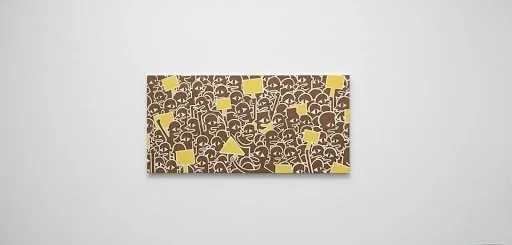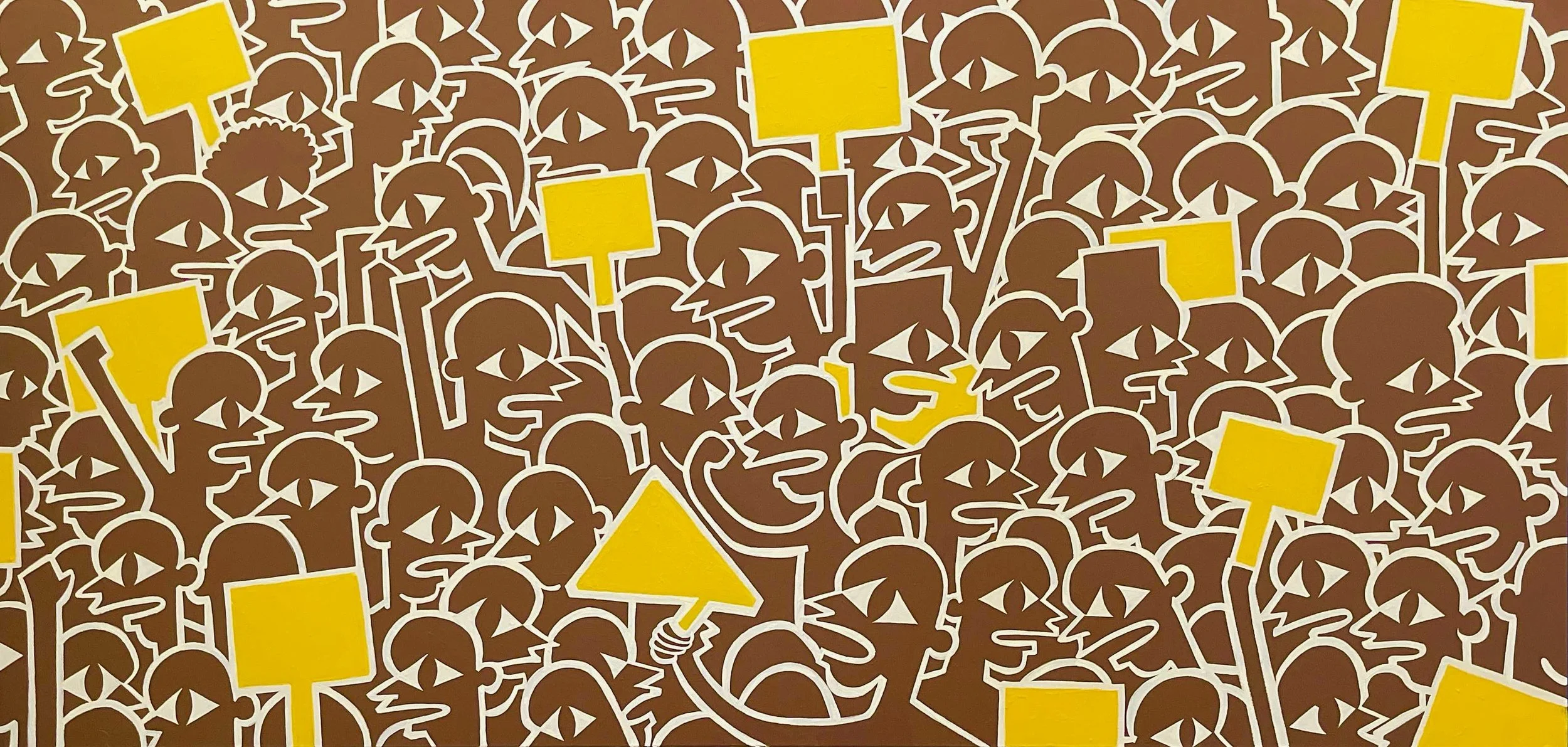"Black Lives Matter": A Formal and Visceral Commentary
This canvas, "Black Lives Matter," is not a depiction of a fleeting moment; it is my depiction of an enduring, sustained truth. It stands as a formal and visceral commentary on the collective, lifelong effort required for visibility and liberation.
As an artist whose career has been dedicated to examining the intersection of identity, power, and the diaspora experience, from my roots in Belize and Chicago to exhibitions I have shown globally, this painting represents my profound and direct confrontation with the systemic realities that shape the Black experience.
The piece, like the critical practice honed during my time at Cornell University (BFA, 2000), serves as both a reflection and a continuation of an essential artistic dialogue. Crucially, its power was recognized as a cornerstone of my 2022 solo exhibition at Band Of Vices in Los Angeles, titled "Nothing To See Here." This critically received show centered on the very act of observation and denial, and the painting’s inclusion underscored its necessity.
Its calculated visual language and vital cultural context affirm "Black Lives Matter" not merely as a contemporary painting, but as an essential historical artifact. The work is a critical touchstone, reflecting the deepest complexities of our current moment while channeling a history of artistic and social critique. Its sustained resonance is its own testament.
The Formal Language of Collective Pressure
In "Black Lives Matter," I strip the scene down to its most elemental components: form, color, and relentless repetition. The surface is dominated by a sea of stylized, brown figures rendered in stark white outlines. This high contrast, graphic approach is intentional; it is my way of denying comfortable realism, elevating the image from a mere street scene to an archetypal statement about protest and collective anonymity.
The faces, while differentiated by subtle gestures and expressions of agitation or weariness, repeat across the canvas. This repetition speaks volumes. It is the visual articulation of persistent, unwavering pressure. This is not a crowd that gathers once; it is the constant, overwhelming presence of a community standing in solidarity. The use of a flat, monochromatic palette (browns and whites) grounds the work in reality, while the introduction of the jarring, aggressive yellow, used only for the placards and signs, serves as a visual alarm. Yellow is the color of caution, of notification, of the signal light demanding you stop and look. It is the stark, undeniable proof of the message being carried. I believe this is a powerful demonstration of how formal restraint can amplify conceptual weight.
The Context and the Critical Oeuvre
My work has always held a mirror to socio-political realities. Whether I was examining political upheaval in the Caribbean with shows like "the dudus chronicles" or confronting policing and state violence in my recent Chicago exhibition "Thoughts & Prayers,"** I believe** the artist’s role is to critique and document.
"Black Lives Matter" is therefore situated squarely within this established trajectory of my career and is integral to the conversation I initiated by "Nothing To See Here." It is an extension of the critical dialogue I have pursued globally, establishing it as a key piece in understanding my commitment to Social Practice within my Fine Art output. This work captures the essential, enduring nature of the movement, not just its headlines. It speaks to the burden and the resilience required to constantly assert one’s humanity. The piece offers a clear entry point into the visual culture surrounding the most significant civil rights movement of our generation.
Provenance and Enduring Significance
To engage with "Black Lives Matter" is to consider a piece of contemporary history by an artist whose work is rooted in both the diaspora experience and academic discipline. The graphic, almost mural like quality of the piece echoes the power of public protest art while maintaining the formal complexity of a work destined for a permanent collection. It is not fleeting commentary; it is an enduring statement, executed with the clarity and rigor I expect of museum-quality artwork. The emotional density achieved through minimalist means secures this painting's lasting significance and cultural value.

